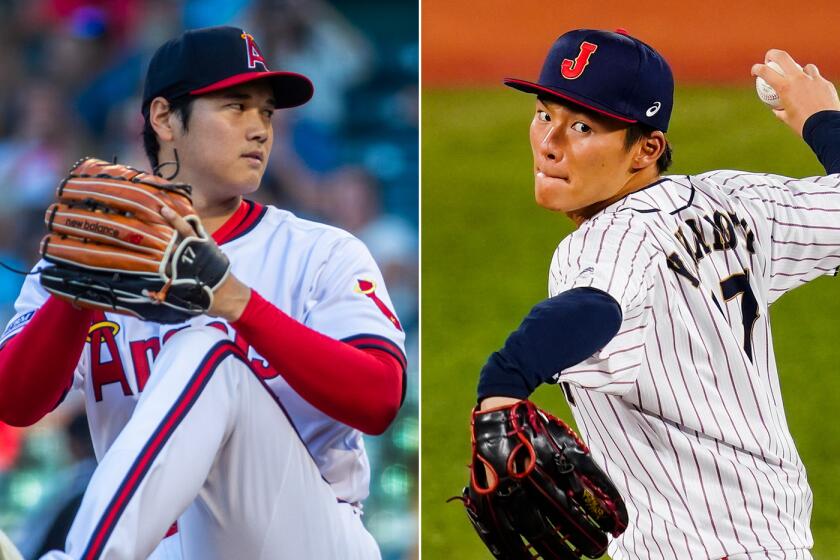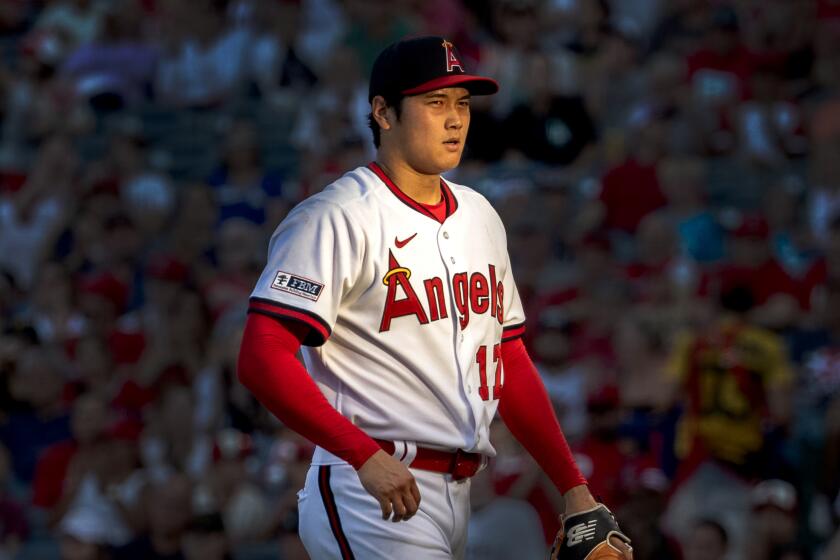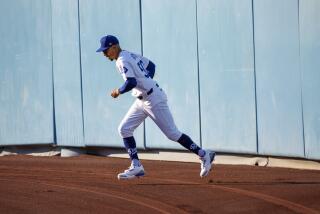Mookie Betts will be Dodgers’ everyday second baseman, Dave Roberts says
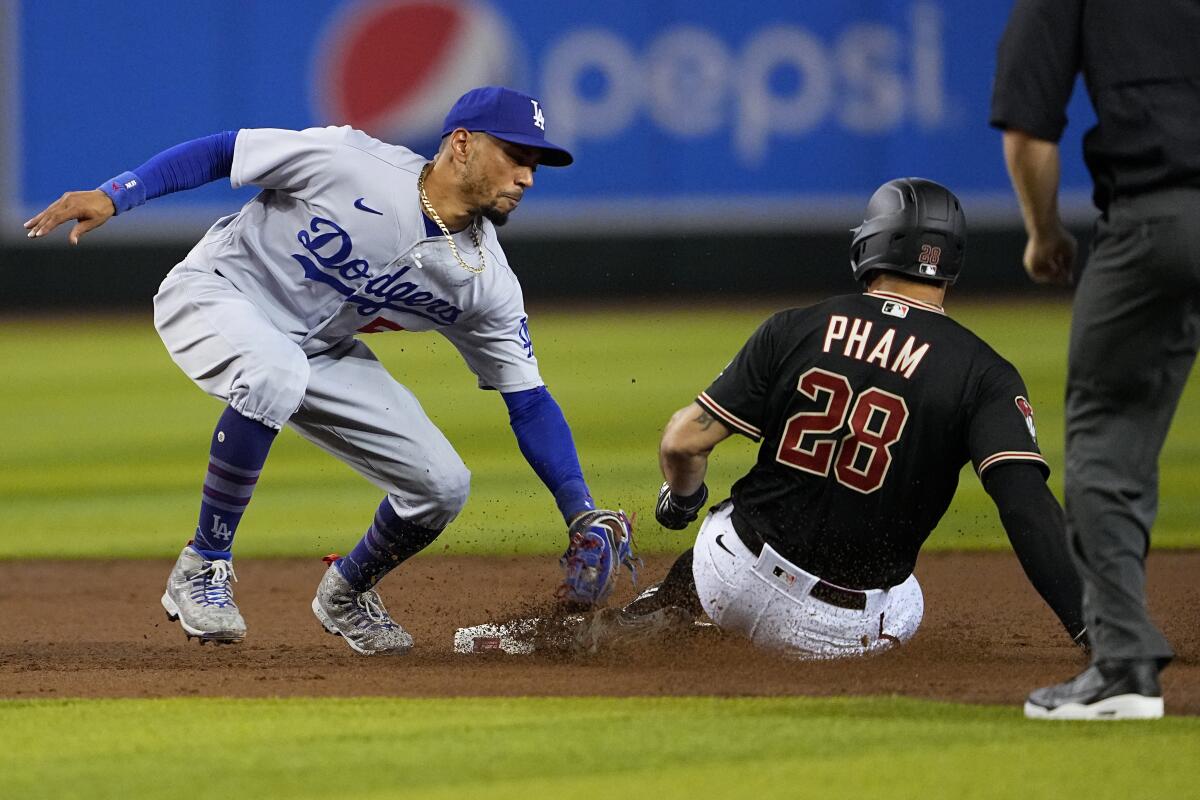
NASHVILLE — Mookie Betts playing second base is no longer just an experiment.
According to Dodgers manager Dave Roberts, the team is planning to move the former MVP right fielder to second base full time in 2024.
Roberts first made the announcement during an interview Monday afternoon on MLB Network, saying, “I think it’s pretty safe to say No. 50, Mookie Betts, is going to be our everyday second baseman.”
Later, during a chat with reporters at MLB’s annual winter meetings, the eight-year manager doubled-down, explaining that after conversations between himself, Betts and the front office, “we all just kind of felt that … for him to look at himself primarily as a second baseman is where we want him to start, as opposed to looking at himself primarily as a right fielder.”
The Dodgers appear to be waiting for this offseason’s two biggest dominoes, Shohei Ohtani and Yoshinobu Yamamoto, to fall before making any other major moves.
Roberts’ comments marked an apparent change of plan for the club.
Entering the offseason, the Dodgers had intimated that Betts would split his playing time between second base and right field, similarly to last season when he would typically start at second base against right-handed pitching (left-handed hitting Jason Heyward would play in right field those days) and at right field against left-handed pitching.
Roberts, however, pointed to several potential advantages of keeping Betts at second base full time — even though the 31-year-old is a six-time Gold Glove winner in right.
First and foremost, Betts has made his affinity for second base abundantly clear in recent years, relishing even part-time opportunities to return to the position he played growing up.
“Yes,” Roberts said when asked if Betts gets more excited about playing games at second base. “No question. And he’ll say the same thing.”
Roberts also believes the move will keep Betts healthier long term (since the position is less physically demanding than right field) and more engaged in the game pitch to pitch.
“It keeps him on the field the most,” Roberts said, noting Betts would need fewer off days at second. “We feel it gives our roster the most optionality.”
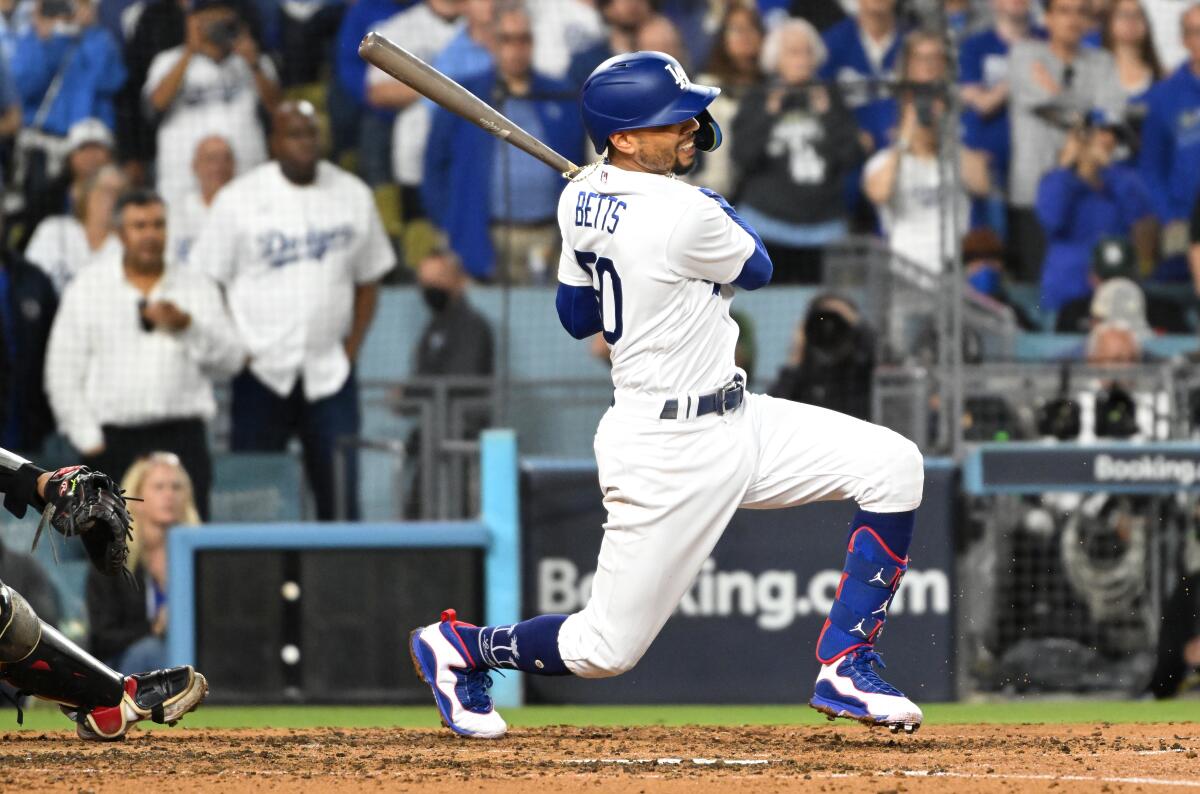
Furthermore, Roberts reasoned that Betts’ uptick in offensive production last season — when he hit .307 with a career-high 39 homers to finish second in National League MVP voting — was a byproduct of his increased time at second base.
The most telling evidence: Betts had a 1.004 on-base-plus-slugging percentage while playing the infield (even though most of those at-bats were in right-on-right pitching matchups), compared to a .970 OPS while playing in the outfield.
“I think you get a better Mookie Betts by playing him at second base,” Roberts said. “The production spoke to that.”
Roberts didn’t completely close the door on Betts playing occasionally in right field. Which offseason moves the Dodgers make this winter could also have an impact on their overall lineup decisions.
But Roberts made clear that Betts wouldn’t reprise his split-role from last year, when the perennial All-Star made 74 of his 151 starts on the infield (including 12 games at shortstop while the Dodgers were battling injuries) and 50 of his final 79 starts at second base.
“I do think that a player of his status doesn’t want to be looked at as a utility guy,” Roberts said. “Not that we viewed him that way. But I do think that that played a little part in giving him some clarity of a role.”
Betts staying at second base gives some clarity to the Dodgers’ other lineup plans as well.
With Heyward expected to face mostly right-handed pitching again next year, the Dodgers could pair other right-handed bats like Chris Taylor or Miguel Vargas with him in a right-field platoon.
Don’t expect the two-way superstar to announce who he’s signing with like LeBron James did with “The Decision.”
That would leave an opening in left field — where the Dodgers could attempt to make a splash signing (they have shown interest in Teoscar Hernández, one of the top outfielders on the market this year) but would more likely opt for lower-cost additions that could also platoon (which would be similar to last season, when David Peralta and Kiké Hernández shared playing time down the stretch).
If the team doesn’t sign Shohei Ohtani, they would also have to address their opening at designated hitter.
A reunion with J.D. Martinez could be one option, as the team would be interested in re-signing the slugger in the event they miss out on Ohtani. With Martinez fielding strong interest elsewhere following his bounceback 33-homer campaign, however, it’s possible the Dodgers might also keep the DH spot open to rotate various other players through.
The answers to those questions will emerge in the coming weeks, as the team awaits its fate in the Ohtani sweepstakes and decides which direction to go with the rest of its winter.
For now, the team’s manager made only one definitive declaration: Betts will be the team’s everyday second baseman next season, in line for a potential switch back to his original position.
More to Read
Are you a true-blue fan?
Get our Dodgers Dugout newsletter for insights, news and much more.
You may occasionally receive promotional content from the Los Angeles Times.

